I have been loaned a lovely book called Streets of the City by Judy Pulley and have included some of the photographs from it for those of you who like looking at wonderfully atmospheric pictures from the past. You can buy your copy of the book here.
A photographer recorded the vast scale of the construction site for the Holborn Viaduct looking west towards Holborn in 1869. A hoarding advertises the ‘New’ St Pancras Station which opened the previous year …
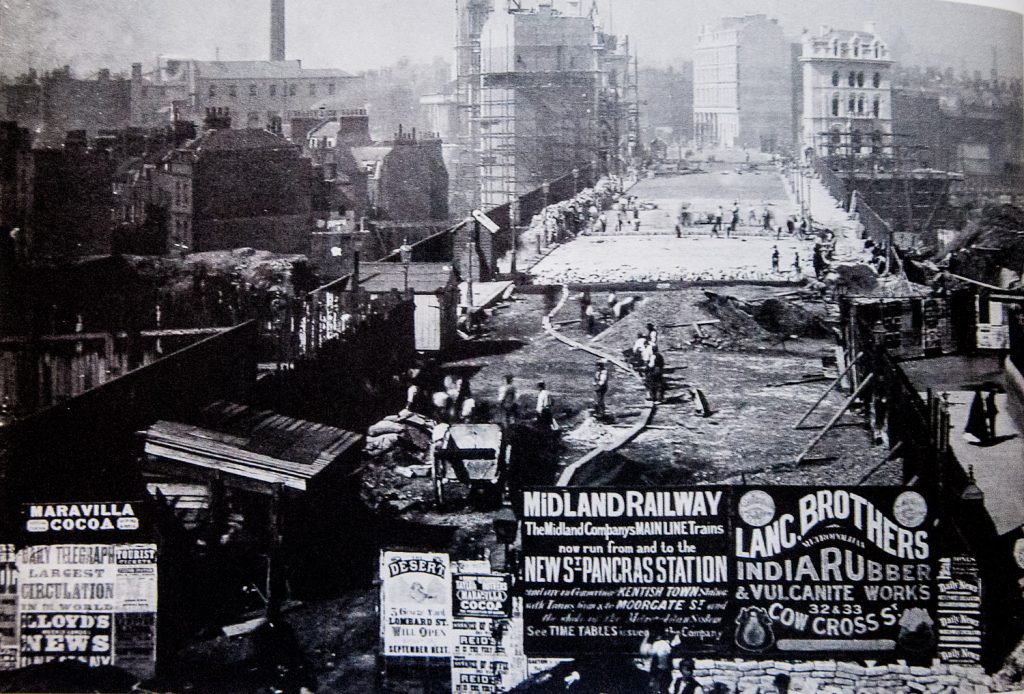
The finished product …
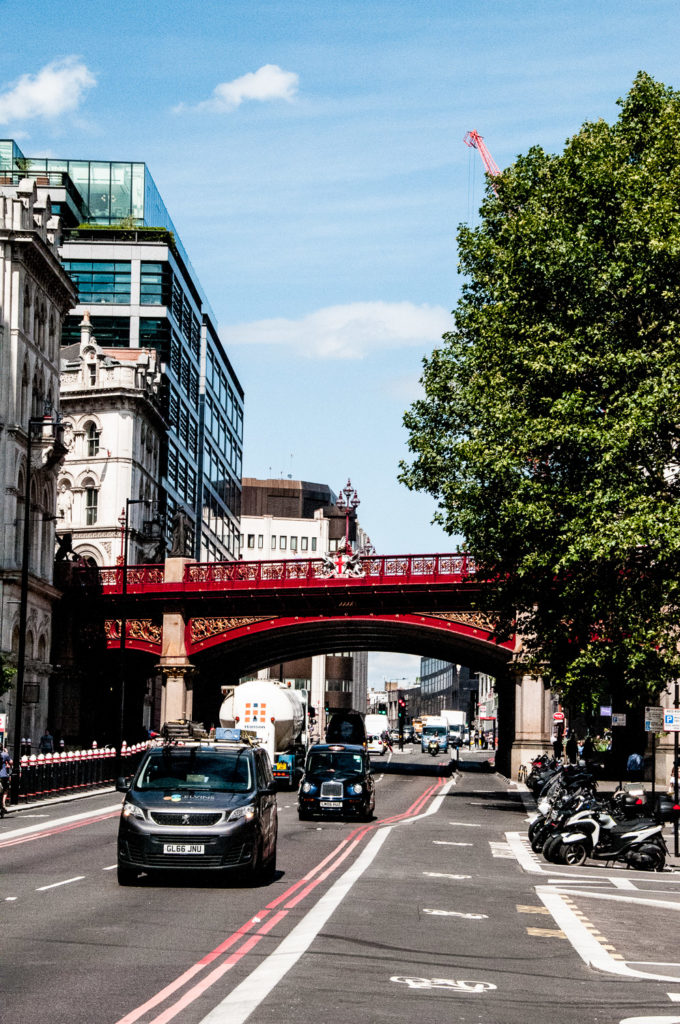
A congested Fleet Street in 1905 …
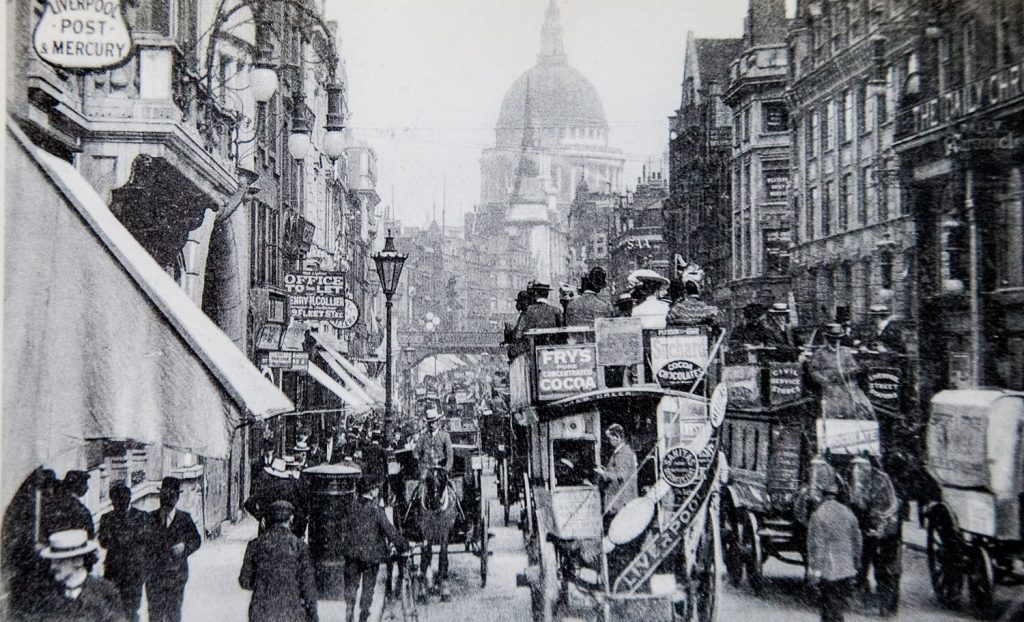
The view today …
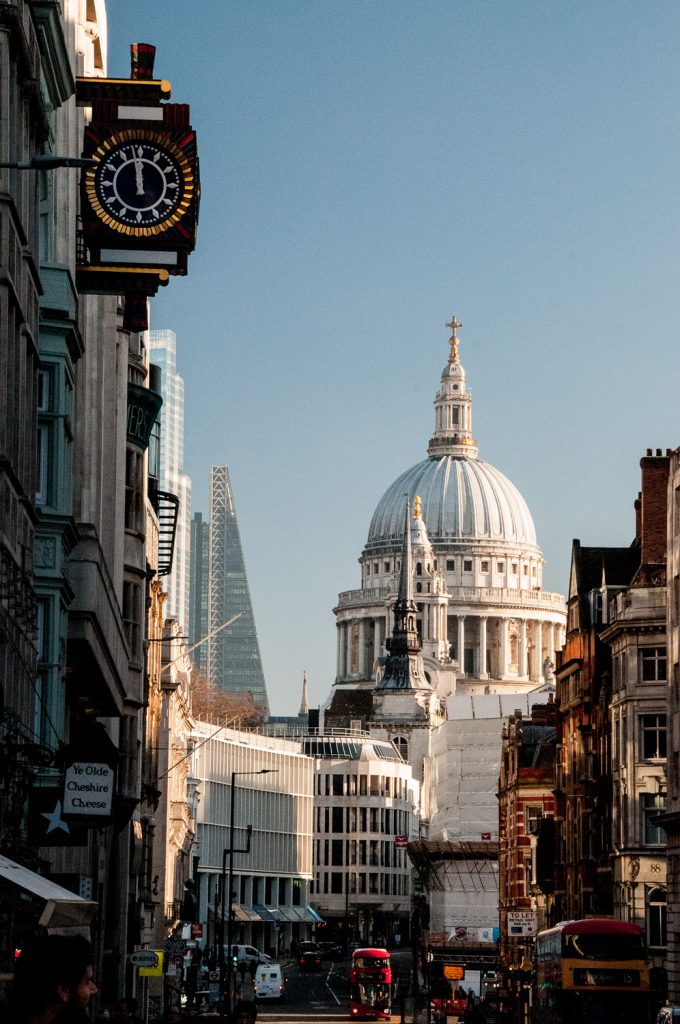
Shops alongside the entrance to Cannon Street station in March 1939. Three years later most had been destroyed by the wartime bombing …
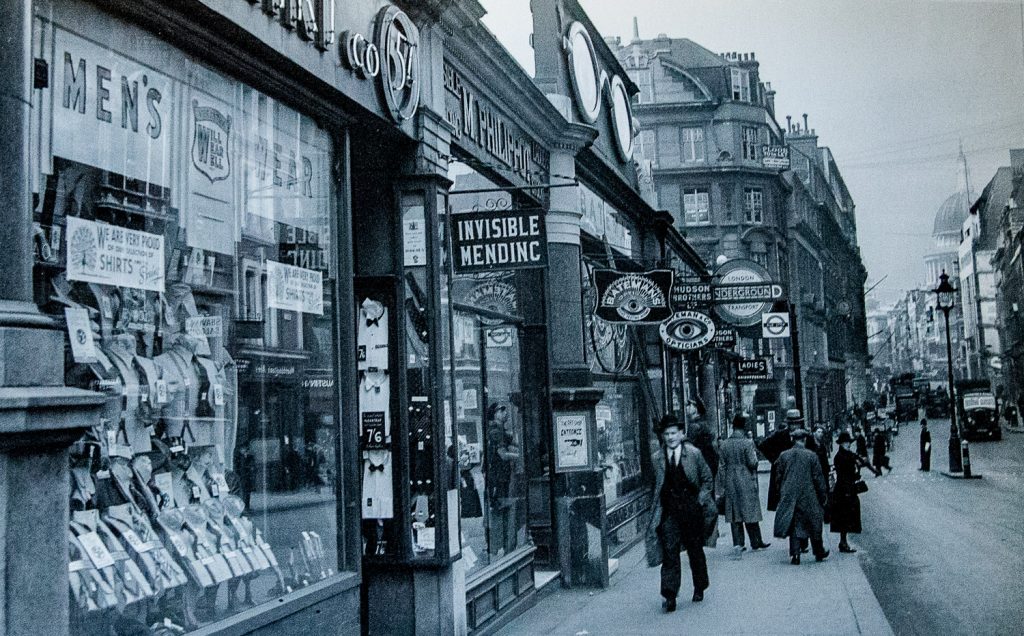
Prince Albert doffs his hat to the City in 2020 …
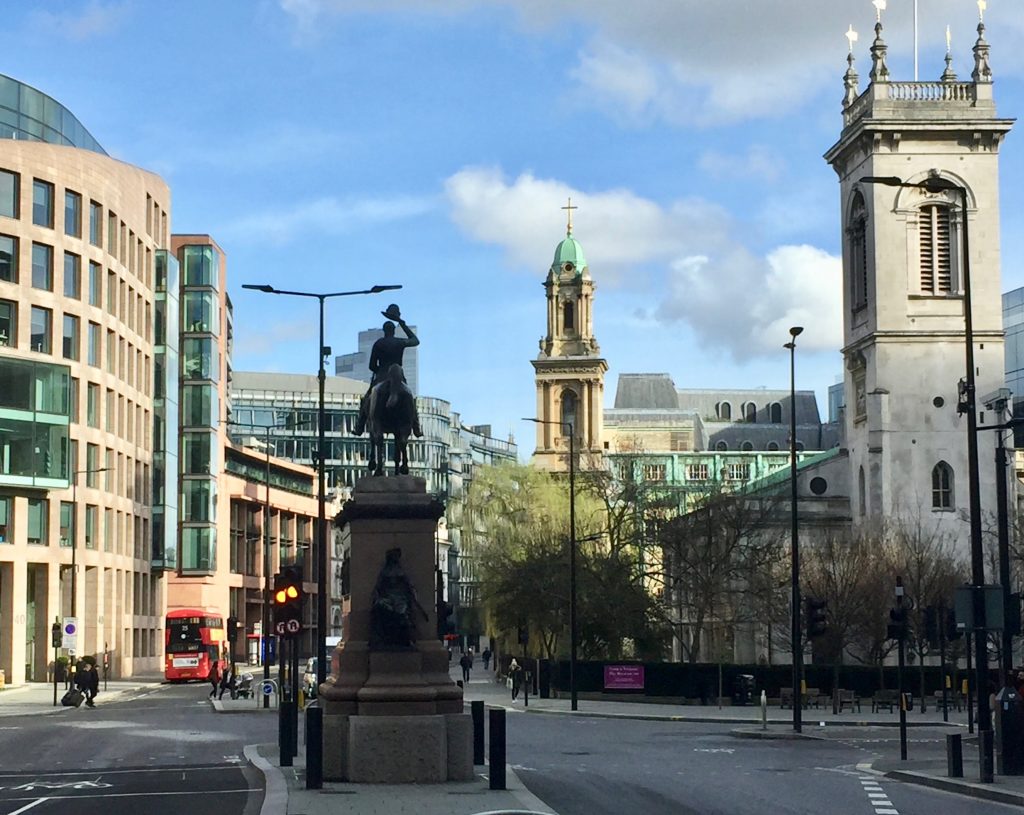
In this picture His Royal Highness makes the same gesture at the turn of the last century…
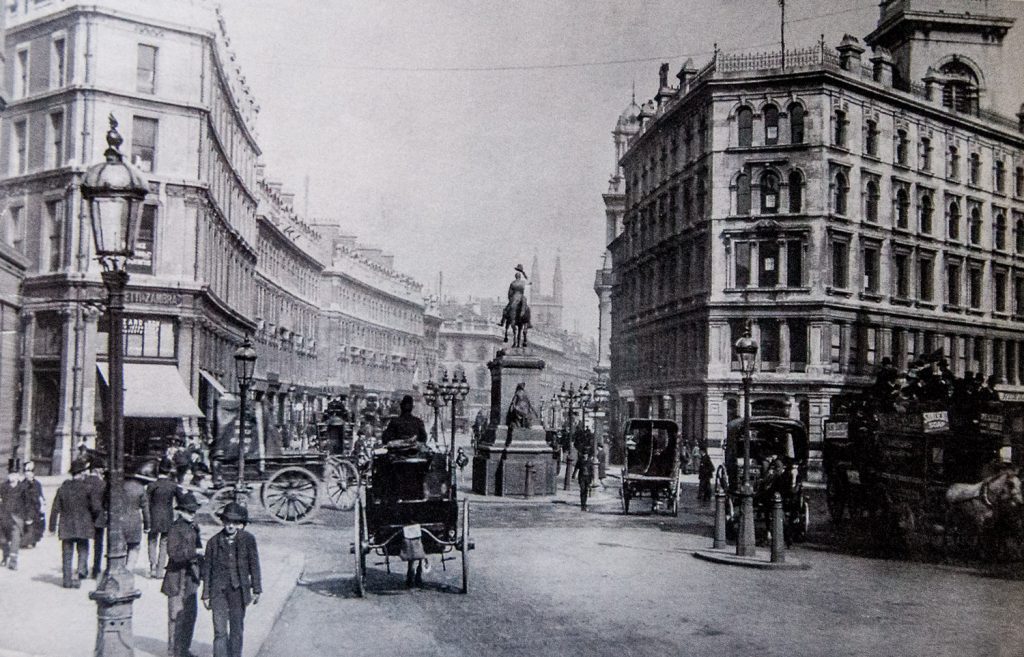
Below is the view towards the west in 1910. The awnings outside Gamages store can be seen on the right and just behind Prince Albert’s statue a man in an invalid carriage braves the traffic. He should be OK if vehicles obey the sign on the lamp post which urges ‘Caution’ and ‘Drive Slowly’. Wallis & Co on the left advertises linens and blankets and has a display of parasols hanging outside the shop. …
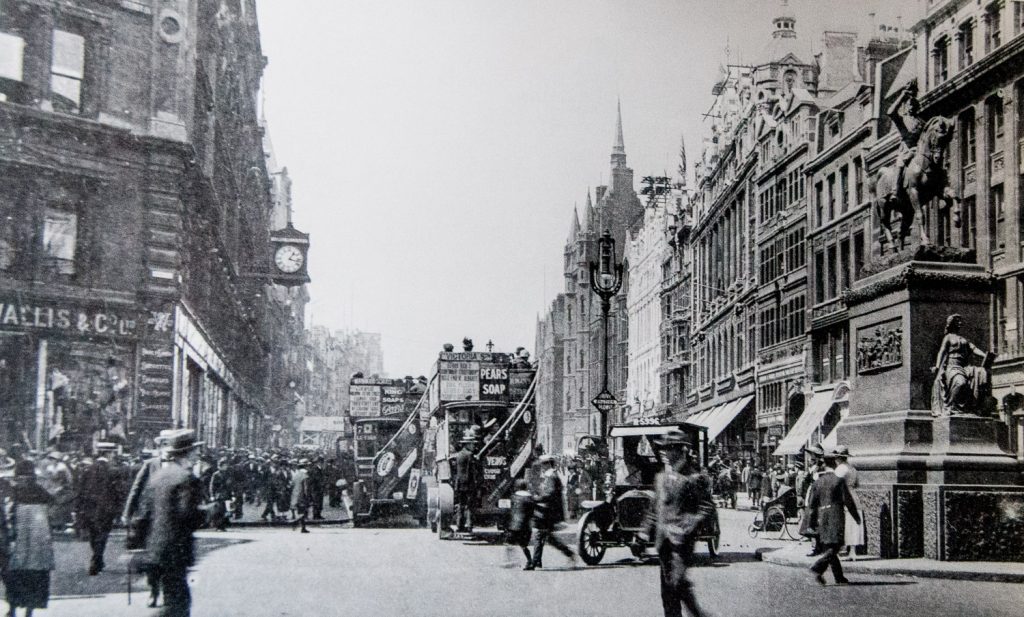
Eastcheap as seen from the end of Cannon Street. The statue of King William IV was erected in 1844 when King William street was created as a new approach to London Bridge. The small cart in the centre is delivering ice and the buses are turning right towards London Bridge, just as they do now …
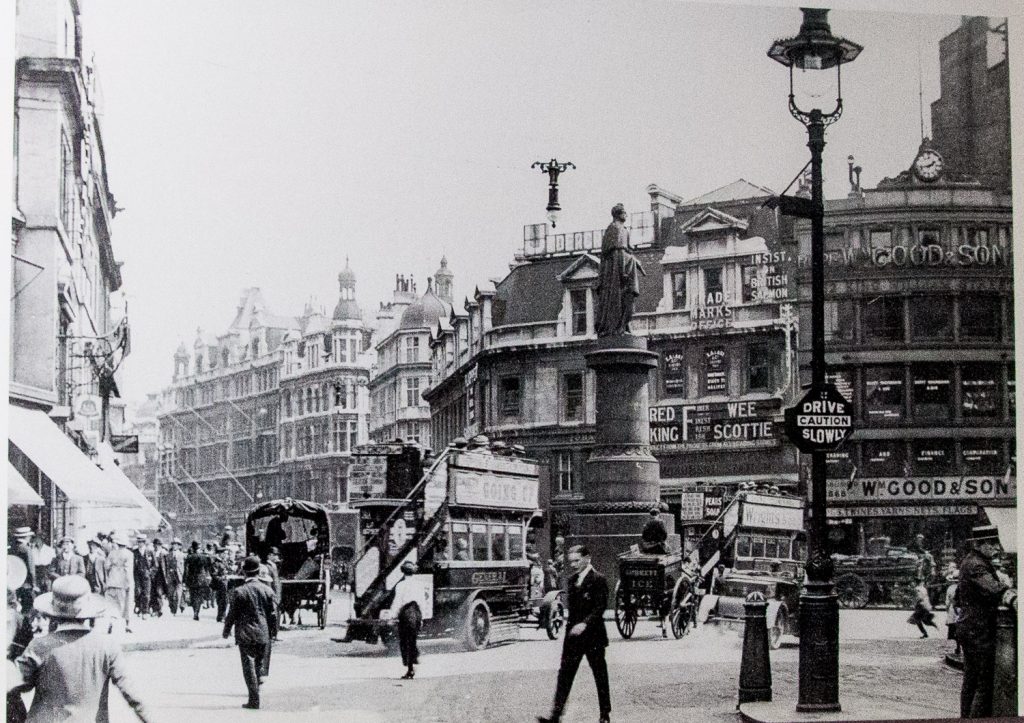
The busy west end of Cheapside at the corner of New Change around 1905 with omnibuses and a Royal Mail coach to the right. The statue is of Sir Robert Peel and was erected here in 1855 and then removed to Hendon Police Training School in 1939 …
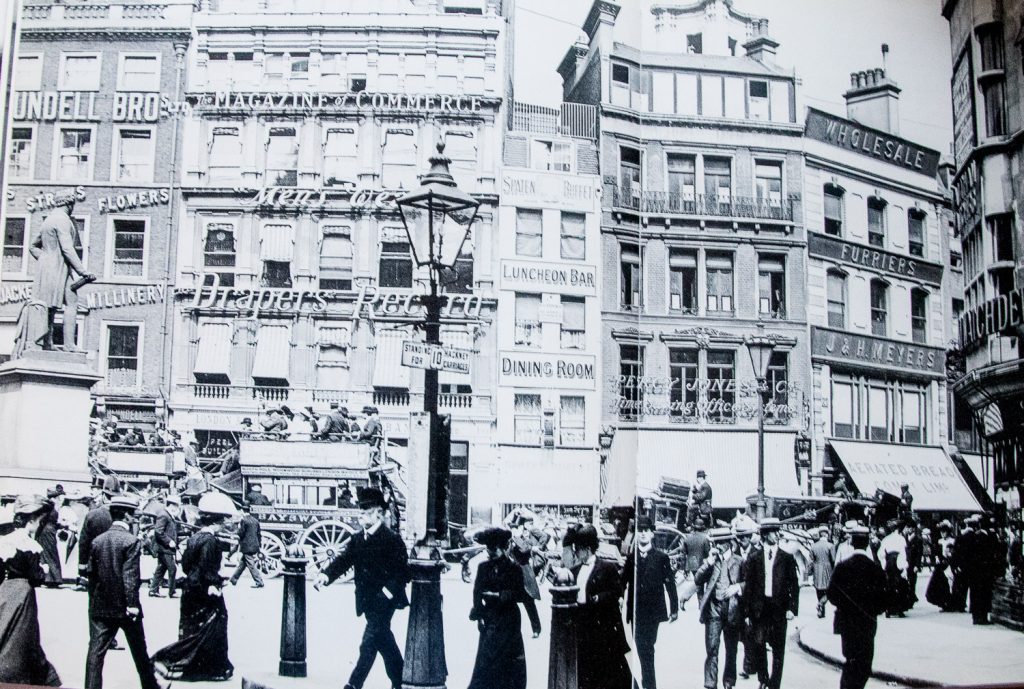
I particularly like this picture of Fleet Street in the 1930s because it shows the cart on the left laden with massive rolls of paper for use in the nearby printing presses …
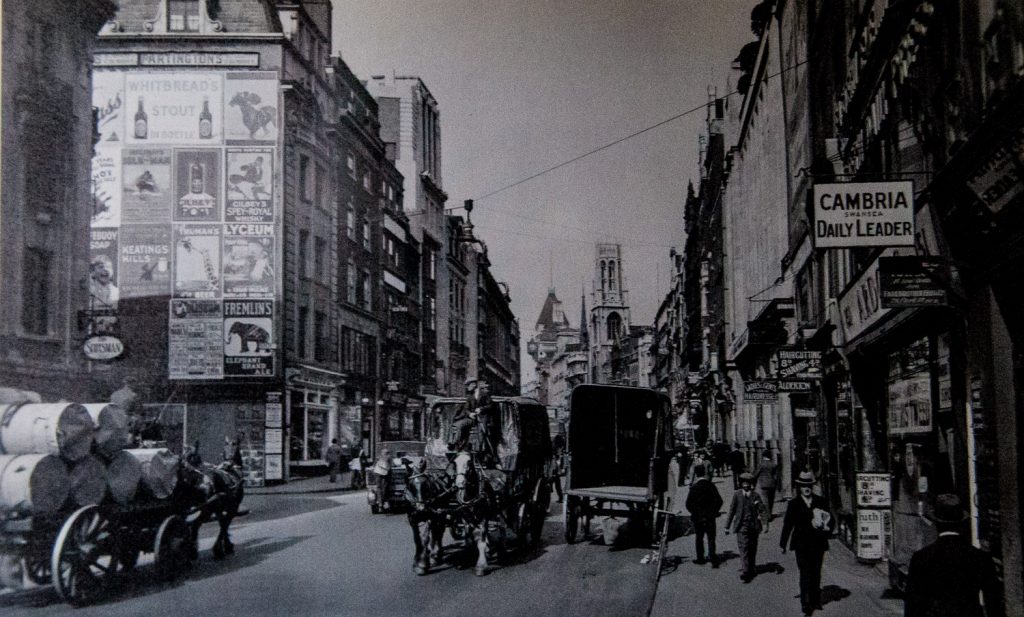
It’s 7 o’clock in the morning in February 1937 and Lower Thames Street is at a standstill as fish from old Billingsgate Market is loaded on to carts …
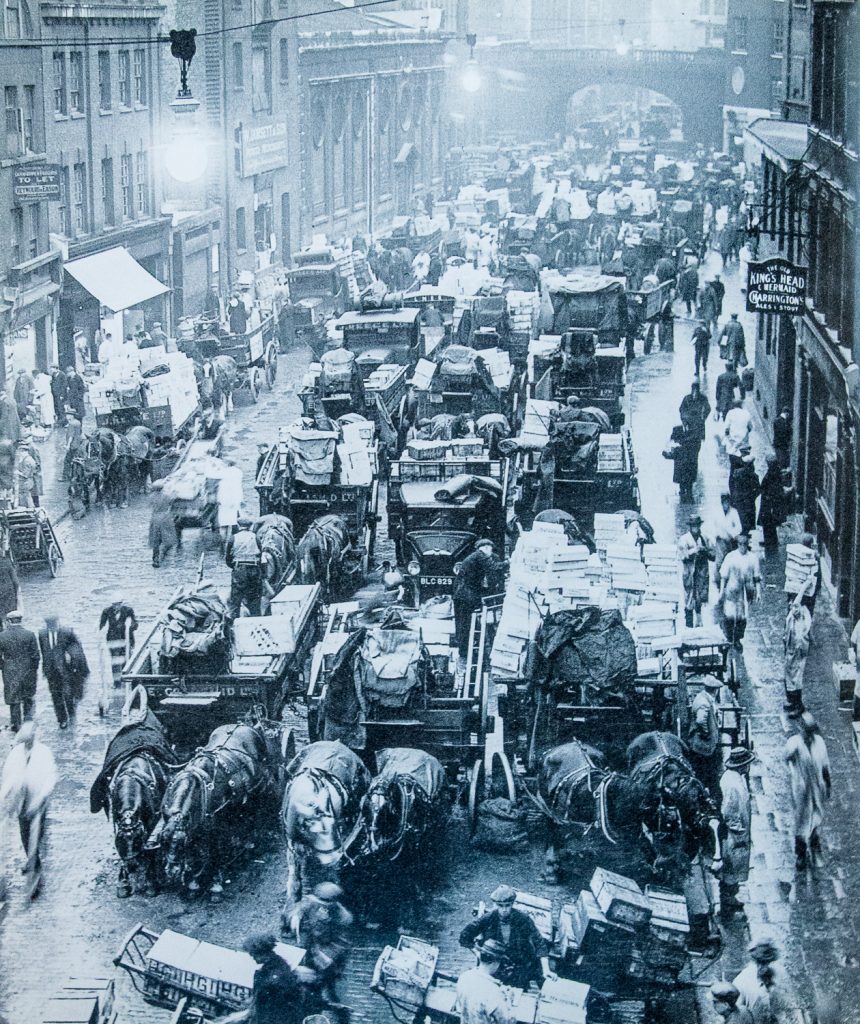
The viaduct carrying the approach road to London bridge can be seen in the distance and to its left the church of St Magnus the Martyr.
Many of these pictures illustrate the enormously important role horses played in the life and commerce of the City right into the 20th century.
Remember you can follow me on Instagram :
